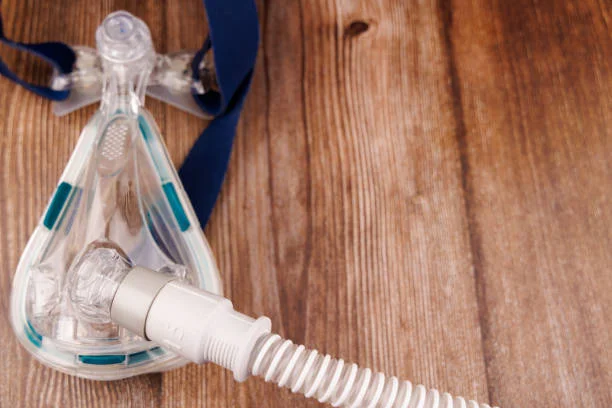Living with COPD means thinking about your lungs every day – how to breathe easier, avoid flare-ups, and keep up with life. The device you use to deliver your therapy matters just as much as the medication itself. The “right” device is the one you can use correctly and consistently. This guide explains the main types of breathing devices, how they work, when they’re used, and practical tips to help you (or your loved one) get the most from treatment.
What Are COPD Breathing Devices?
Breathing devices are tools that support your lungs in different ways. They work alongside your doctor’s care plan, pulmonary rehab, medicines, and healthy habits.
At a glance
- Deliver medicine into your lungs (inhalers and nebulizers)
- Support oxygen levels when testing shows low oxygen (oxygen therapy)
- Assist breathing when your lungs and muscles need help (non-invasive ventilation)
- Move mucus/train muscles to improve airway hygiene and stamina (airway-clearance and inspiratory muscle-training tools)
Why it matters: Matching the device to your breath strength, coordination, and daily routine can reduce symptoms, cut exacerbations, and improve quality of life.
Types of Devices and How They Work
Inhalers
Inhalers are the first-line device for most people with COPD because they’re small, quick to use, and very effective – provided your technique is correct. Different inhaler types require different breathing patterns and levels of hand–breath coordination.
With pMDIs (pressurized metered-dose inhalers), you press the canister and inhale slowly and steadily; using a spacer or valved holding chamber makes the timing easier and helps more medicine reach your lungs instead of your throat.
DPIs (dry-powder inhalers) work the opposite way: you need a fast, forceful inhalation to pull the powder deep into the airways, so they’re great if you can breathe deeply and with strength but less ideal for people who can’t.
SMIs (soft-mist inhalers) release a slow, long-lasting aerosol cloud, which gives you more time to breathe in and can be especially helpful if coordination is tricky or you tend to inhale too quickly with other devices.
Inhalers remain the everyday workhorse in COPD care, and brief technique tune-ups with a clinician or pharmacist often lead to noticeably better control.
Nebulizers
Nebulizers turn liquid medicine into a fine mist you breathe in over a few minutes, so you can use normal, relaxed breaths – ideal when timing an inhaler puff is hard or breath strength is low. Main types include jet (compressor) units (durable, use tubing and a cup), ultrasonic models (quiet and fast, but not for every medication), and vibrating-mesh devices (small, efficient, battery-powered). A portable mesh nebulizer is easy to carry and fits smoothly into daily routines.
Consider a nebulizer if coordinating an inhaler is difficult, if you can’t breathe in forcefully enough for DPIs, during flare-ups, or when your maintenance medication comes in a nebulized form. For upkeep, rinse and air-dry parts after each use, deep-clean weekly, avoid touching the mesh plate, and follow the device’s medication compatibility guidance.
Oxygen Therapy
Long-term oxygen therapy (LTOT) is used when tests show your oxygen is low at rest or during activity; it protects organs and can boost stamina.
You’ll typically use one of three systems: a stationary home concentrator; a portable oxygen concentrator (POC) – usually pulse-dose on inhalation, with some models offering continuous-flow; or liquid oxygen (where available) for higher-flow needs in a lighter portable setup.
Keep in mind a POC’s “settings” aren’t the same as liters per minute, so your care team will often do a walk test with an oximeter to be sure you hit your target saturations.
Match the device to how you actually live – resting, walking, or climbing stairs – and plan batteries/backup so therapy isn’t interrupted.
In short, the best oxygen plan is individualized: the right device, the right mode, and proven performance during your daily routine.
Non-Invasive Ventilation (NIV)
NIV is a mask-based therapy (also called BiPaP) that helps your breathing – most often used at night. It helps push air in and out so your lungs and breathing muscles don’t have to work as hard.
It’s considered for people with severe & late-stage COPD who continue to retain carbon dioxide (chronic hypercapnia) despite good, guideline-directed treatment.
Signs that NIV may fit include persistent daytime sleepiness, morning headaches, or lab results showing high CO₂ levels, as well as ongoing symptoms or flare-ups even when you’re on the right medications.
In many places, recent policy updates also clarify when home NIV and related devices are covered, which can make access easier if you meet the criteria.
Airway-Clearance & Breathing-Training Tools
These tools don’t replace your inhalers or oxygen, but support them by keeping airways clearer and making your breathing muscles stronger.
OPEP devices create gentle vibrations and back-pressure as you exhale, helping loosen and move mucus – especially useful if you bring up sputum often.
Inspiratory muscle training (IMT) devices, commonly used within pulmonary rehab, give your breathing muscles a “workout,” which can improve inspiratory strength, exercise capacity, and the sensation of breathlessness over time.
Used alongside your core COPD plan, they can make daily breathing a bit easier and more efficient.
How to Choose the Right Device
Selecting a device is a practical decision: it should fit your breath strength, coordination/dexterity, cognition, daily routine, and budget – and you should feel confident using it correctly.
Quick Chooser
- Want the simplest daily plan: Start with an inhaler (pMDI/DPI/SMI) and get technique coaching.
- Low inspiratory flow or coordination issues: Consider a nebulizer like a portable mesh nebulizer or an SMI.
- Frequent sputum: Add an OPEP device plus an airway-clearance routine.
- Weak inspiratory muscles: Add IMT within pulmonary rehab.
- Low oxygen on testing: Use LTOT (stationary + portable setup as prescribed).
- Daytime sleepiness or high CO₂ despite therapy: Ask about BiPaP therapy at night.
Many people use more than one tool (an inhaler for maintenance, a nebulizer during flares, OPEP for mucus). Sticking to the same device style across different medicines can simplify life.
Common Mistakes & Easy Fixes
Small technique tweaks often deliver big gains.
- Technique drift: Have a clinician or pharmacist watch your inhaler/nebulizer technique a few times a year.
- Skipping cleaning: Rinse after each session; weekly deep-clean per your device guide. Never submerge compressors or tubing.
- Damaging mesh plates: With mesh nebulizers, avoid touching the mesh; handle and dry carefully.
- POC setting confusion: Pulse-dose settings ≠ L/min. Verify with a walk test and oximeter that you meet your oxygen targets during activity.
Explore related articles to deepen your understanding before you go.
Frequently Asked Questions (FAQ)
Is a nebulizer better than an inhaler?
Neither is “better” for everyone. Inhalers are first-line for maintenance if you can use them correctly. Nebulizers shine when timing or inspiratory flow is a barrier – or when your prescribed medication is formulated for nebulization. SMIs can also help if coordination is tough.
What’s new for nebulized COPD meds?
There are now maintenance options delivered via nebulizer on top of the relievers and bronchodilators you may already know. If you’re interested in a daily plan built around a nebulizer, ask your clinician whether one of these therapies fits your treatment goals.
Do portable oxygen concentrators (POCs) work for everyone?
POCs are great for mobility, but not all patients meet targets on pulse-dose settings – especially on hills, stairs, or faster walking. Your team will test you (often with a 6-minute walk) and select the device/setting that keeps your oxygen saturation in range.
Who should consider home NIV?
People with COPD who have chronic hypercapnia despite optimized treatment may benefit from night time NIV. Coverage criteria and device selection depend on clinical testing—talk with your clinician about eligibility and expected benefits.
The Bottom Line
Your device should fit your breath strength, your hands, your routine – not the other way around. Inhalers remain the mainstay; nebulizers reduce timing demands; oxygen therapy supports low saturations; NIV helps selected patients with CO₂ retention; and airway-clearance/training tools can round out the plan. If coordination or inspiratory flow is a challenge, a portable mesh nebulizer can offer quiet, convenient delivery you can stick with. Work with your care team to trial, train, and regularly re-check technique – that’s how the right device makes every breath count.







